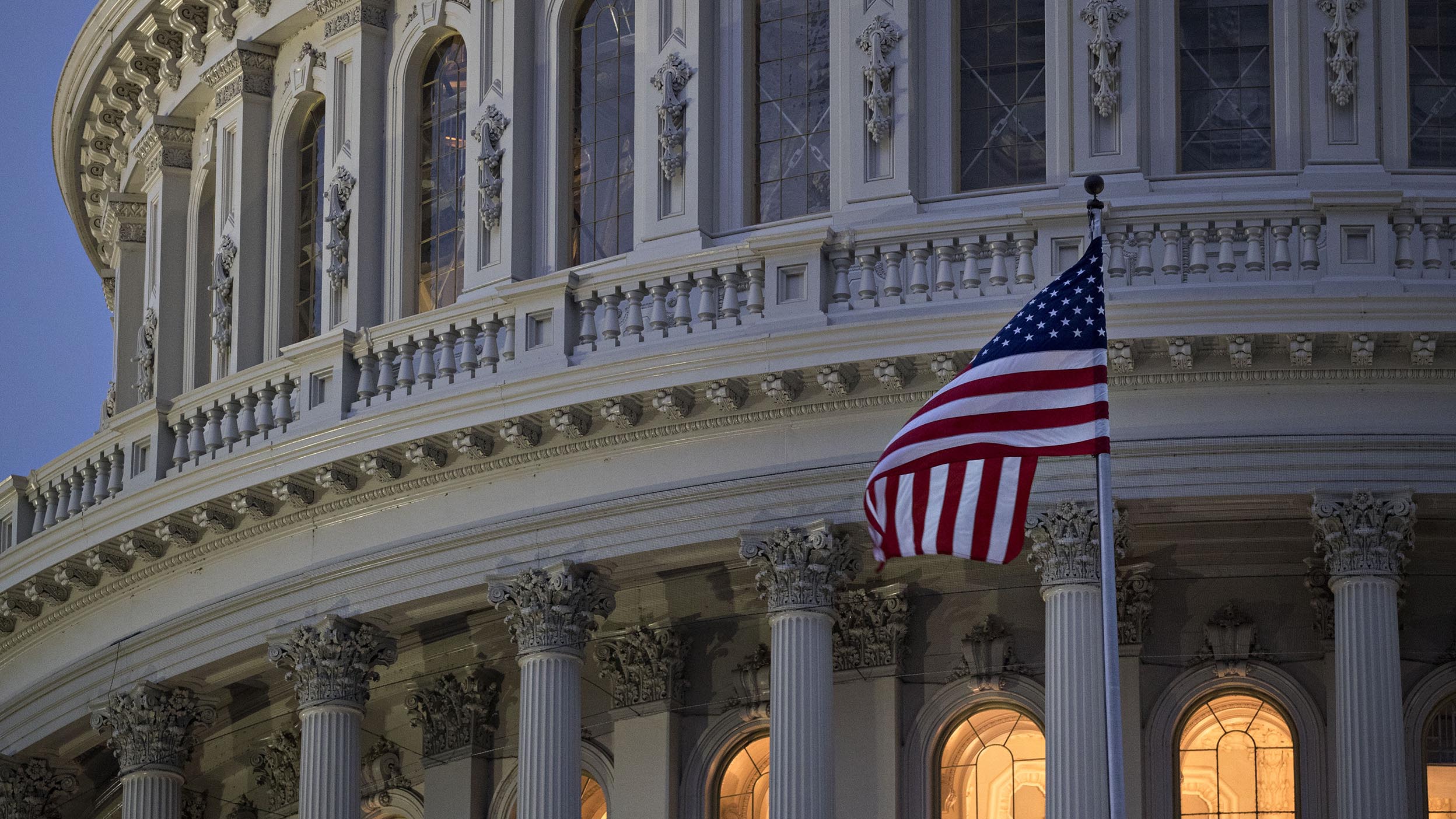
Markets and Economy Staying focused through tariff uncertainty and market jitters
With policy uncertainty rattling markets and consumer sentiment, it’s important to remember the market's long-term growth throughout its history.

The Federal Reserve was created to deal with financial panics, but Congress has given it additional responsibilities.
The 12-member Federal Open Market Committee sets the federal funds rate and the country’s monetary policy overall.
It’s the rate at which banks can lend to each other overnight, influencing mortgages, credit cards, and other rates.
Companies and consumers participate in a vast marketplace of goods and services. And one entity watches over everything. The Federal Reserve System — the Fed — is the US central bank. It has found itself in the spotlight for its efforts to fight inflation with high interest rates. With inflation coming under control, the Fed has since set about cutting rates. But it does a lot more than you may realize. What exactly is the Fed, and how does it work?
Learn more about inflation and how it works
The Federal Reserve Act of 1913 created the Fed to counter financial panics and bank runs such as the Panic of 1907, which led to multiple bank bankruptcies and a massive fall in the US stock market. Congress added other responsibilities to the Fed’s job description over the years following times of economic instability.
Today, the Fed’s responsibilities include:
This is a broad umbrella that covers inflation, interest rates, and unemployment. The Fed has a dual mandate of keeping prices stable while maximizing employment — hallmarks of a strong economy. Specifically, the Fed’s target annual inflation rate is 2%. Its target unemployment rate varies but normally comes in at or below 5%, which is generally considered full employment.
A smoothly functioning economic system allows consumers and businesses to buy, save, borrow, and invest. The Fed monitors the domestic economic system as it grows and evolves, and it interacts with central banks in other countries to promote American interests.2
The Fed watches over financial institutions to ensure sound practices that comply with existing rules and regulations.3
The Fed makes short-term loans to commercial banks, helping them stay liquid and meet their reserve requirements — the minimum amount of capital a bank must have on hand by law.
A lesser-known Fed responsibility is to promote “a fair and transparent consumer financial services marketplace and effective community development, including for traditionally underserved and economically vulnerable households and neighborhoods.” The goal is to ensure that financial institutions follow existing laws designed to protect individuals.4
The Fed is divided into three parts:
The Federal Reserve Board — or Board of Governors — is the system’s centralized governing body, supervising the regional banks. It’s made up of seven members that are nominated by the president and confirmed by the Senate to serve 14-year terms.
The 12 regional Federal Reserve banks implement Fed policy and ensure the financial system runs smoothly by enforcing regulations and lending to commercial banks to keep the system liquid. They also pull together local information that’s used for broader monetary decisions.5
The 12 voting members of the Federal Open Market Committee decide the country’s monetary policy, including setting the federal funds rate, and control the nation’s money supply by buying and selling securities.6 The FOMC meets eight times a year to make policy decisions. It’s composed of the Board of Governors of the Federal Reserve System as well as the president of the Federal Reserve Bank of New York plus four other Reserve Bank presidents who rotate each year. There are five alternate members, comprised of the remaining Reserve Bank presidents and the First Vice President of the New York Fed, who participate in the discussions but do not vote.
The federal funds rate, as the Fed describes it, is the “central interest rate of the US financial market.”7 It’s the rate at which banks can lend balances to each other overnight, and it influences other interest rates throughout the economy, such as mortgage rates and credit card rates. Raising or lowering the fed funds rate can have far-reaching effects as the change ripples throughout the financial system.
The Fed gathers a lot of data to measure the economy and the direction it’s heading. Some of that data is quantitative, and some is qualitative. Key reports include:
Fed governors and reserve bank presidents submit their economic projections toward the end of every quarter leading into the next FOMC meeting. These projections are compiled into a series of charts and graphs showing their composite projections on changes in gross domestic product (GDP), the unemployment rate, and inflation. One of these charts shows the federal funds rate that each participant believes will lead to the right level of employment and price stability — in other words, each individual FOMC member’s “policy prescription.” Those rates are plotted with a series of dots, earning it the nickname “dot plot.”8
Each Federal Reserve bank keeps contact with members of the business community in their respective regions — from business leaders to market experts to economists — to take their temperature on current local conditions. They also receive insights from community organizations, in an attempt to understand diverse viewpoints on the economy, as well as district banks.9 All this anecdotal analysis is compiled in the Fed’s Summary of Commentary on Current Economic Conditions, which is released two weeks ahead of each FOMC meeting. The report is commonly known as the Beige Book thanks to the color of its cover.
SLOOS asks a collection of 100+ US banks and US branches of foreign banks for their thoughts on the domestic lending environment, including credit conditions, lending standards, and other relevant topics. This quarterly survey can provide a better understanding of the country’s credit and lending markets and can help inform interest rate decisions.
Some economic indicators are published with a significant lag. Nowcasts use models to estimate where these indicators currently stand based on available data. They aren’t official forecasts, and they change as new data is released. Examples include the Atlanta Fed’s GDPNow estimate of gross domestic product and the Cleveland Fed’s daily nowcasts of inflation.
Tightening monetary policy includes actions by a central bank to increase the cost of borrowing with the goal of curbing inflation or preventing imbalances in the economy. Actions may include hiking rates or reducing the size of the central bank’s balance sheet.
Overtightening is the risk that a central bank will increase rates too much and harm the economy.
Undertightening is the risk that a central bank won’t hike rates enough to help temper inflation.
Easing monetary policy includes actions by a central bank to reduce the cost of borrowing with the goal ofencouraging economic growth or preventing deflation. Actions may include lowering rates or increasing thesize of the central bank’s balance sheet.
A basis is one hundredth of a percentage point.
https://www.federalreserve.gov/aboutthefed.htm
https://www.federalreserve.gov/financial-stability.htm
https://www.federalreserve.gov/supervisionreg.htm
https://www.federalreserve.gov/aboutthefed/files/pf_7.pdf
https://www.federalreserve.gov/aboutthefed/files/the-fed-explained.pdf
https://www.stlouisfed.org/-/media/project/frbstl/stlouisfed/files/pdfs/publications/pub_assets/pdf/re/2013/b/reader_exchange.pdf
https://fred.stlouisfed.org/series/FEDFUNDS
https://www.federalreserve.gov/monetarypolicy/guide-to-the-summary-of-economic-projections.htm
https://www.federalreserve.gov/monetarypolicy/publications/beige-book-default.htm

With policy uncertainty rattling markets and consumer sentiment, it’s important to remember the market's long-term growth throughout its history.

While the setup for markets was good coming into 2025, they’ve struggled as investors assess ongoing changes to the US policy approach.

A Purchasing Managers’ Index (PMI) tells economists and investors whether the manufacturing and services sectors are contracting or expanding.
NA4006829
Header image: fstockfoto / Getty
All investing involves risk, including the risk of loss.
This is for general educational use only and should not to be construed as an offer of investment advice or financial products.
Gross domestic product is a broad indicator of a region’s economic activity, measuring the monetary value of all the finished goods and services produced in that region over a specified period of time.
This link takes you to a site not affiliated with Invesco. The site is for informational purposes only. Invesco does not guarantee nor take any responsibility for any of the content.